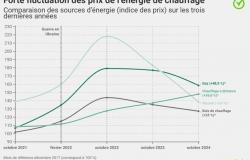Author of a great 2023-2024 season with Real Madrid, Vinicius Jr was the big favorite to win the Ballon d'Or. However, it was ultimately Rodri who was crowned at the Châtelet theater in Paris. While a controversy broke out, Florentino Pérez – the Merengue president – made a new announcement about Vinicius Jr.
During the 2023-2024 season, Vinicius Jr particularly stood out. Thanks to his XXL performances, the Brazilian star allowed the Real Madrid to lift a 15th trophy in Champions League. Vinicius Jr was therefore the big favorite to win the Ballon d’Orin front Rodri (Manchester City)et son coéquipier Jude Bellingham. However, the number 7 merengue was finally overtaken in the ranking by the champion ofEurope Spanish.
Rodri won the Ballon d'Or, ahead of Vinicius Jr
Having understood that Vinicius Jr wasn't going to raise the Ballon d’Orthe delegation of Real Madrid canceled his trip for Paris. Thus, no member of the Merengue club was present at the Châtelet theater to attend the coronation of Rodri. While a controversy broke out, Florentino Perez once again praised his Brazilian striker.
“He’s the best player in the world”
“We are proud of a player like Vinicius. For many, he is the best player in the world (applause). Dear Vini, I want you to know that the people of Madrid are proud of you, of everything you have had to endure many times, unjustly. All this has made you the player you are,” declared Florentino Perezthe president of Real Madridat the last socios meeting.






